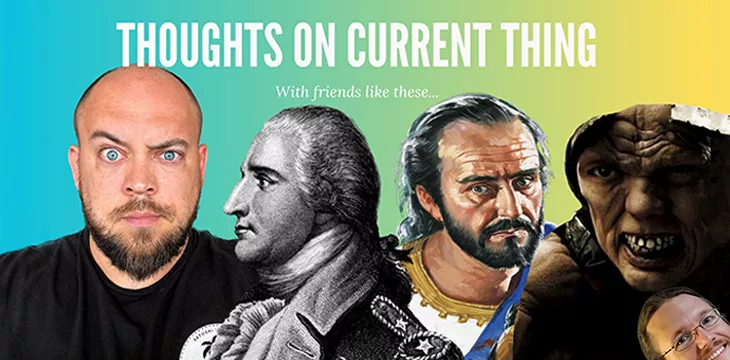|
Getting your Trinity Audio player ready...
|
The crypto economy is the most corrupt trillion-plus dollar sector on Earth. With ties to the gray markets of the mainstream economy and overt connections to black markets, it shouldn’t be shocking when so many things stack together just a little too nicely to have been a coincidence. Then, there are the connections to old world finance, payments companies and venture capital from Silicon Valley who seem completely content to churn through token launches, run pump-and-dump schemes, and then just pretend it never happened.
My work has largely focused on the Bitcoin-related aspects of this phenomenon and occasional forays into Ethereum or the blockchain of the month like Solana, but the economy as a whole really is the absolute dregs of society, top-to-bottom.
For example, in 2017, AXA, Mastercard (NASDAQ: MA), New York Life, Bain Capital, and CME Group successfully convinced most Bitcoiners that Bitcoin.com, Bitmain, Segwit2X, BitcoinXT, and Bitcoin ABC were an attempted “corporate takeover of Bitcoin.” Given that this paper-thin narrative has become the de-facto accepted narrative across the Bitcoin landscape, a reasonable person can assume that the typical bitcoiner will believe anything as long as they are properly click-trained with fiat gains and comforting narratives.
Mt. Gox, Cryptsy, QuadrigaCX, FTX: all bastions of fraud and incompetence that have been left on the trash pit of ‘crypto’ exchange history. There are things like BitConnect, or its little brother, USItech, or the OneCoin debacle. Let’s not even mention Celsius, BlockFi, TerraLuna, and the rest of the crooks from the last fraud cycle.
Meanwhile, the people from the aforementioned economy would like you to sincerely believe that the BSV blockchain ecosystem can’t be trusted primarily because of a collective hatred for Dr. Craig Wright—a man who did everything in his power to stop BSV blockchain from splitting out from a completely astroturf hash war perpetrated upon BCH by other crooks from the crypto crime cartel (and Facebook (NASDAQ: META), if you follow the money.)
As I analyze the apparent shifting alliances as well as some of the leaked information that hit the internet this week, something stands out: you are either reading the opinions of a sock puppet army hell-bent on control (or destruction) of Bitcoin, or you are reading the opinions of a reclusive member of a seedy underground economy. Either way, Satoshi Nakamoto gave us a solution for finding the signal amid the noise: Proof of Work.
How do we use proof of work in this situation? Figure out who has the highest cost for standing steadfastly for their opinion. Who has the most to lose if they are wrong, and you will find out who has the greatest incentive to get it right.
As I analyze the shuffling of allegiances around the BSV blockchain economy (again?), as well as some of the leaked information that hit the internet this week, something stands out to me. A few people have trusted the proof of work of the others, and that has led them to make calculated decisions about long term investment in the others. Some people have been very loud, and others have been extremely stoic. Some people have an obvious value, and others are questionable.
And then some people just seem to want to show up in your life to kick you in the teeth.
I won’t be so vile as to tell you what to think about your favorite characters in the blockchain soap opera, but “how” you should think is by calculating the proof of work of everyone involved.
Oh! And one last lesson: remember the people who run to help you when you stumble, and never forget the people who laughed while you were down.
Watch: CoinGeek Weekly Livestream with Kurt Wuckert Jr. – Ask Me Anything

 01-07-2026
01-07-2026 




